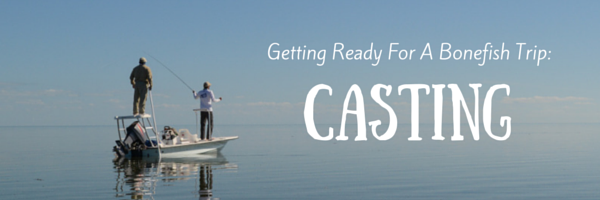People often spend considerable sums in order to fly to exotic locations for bonefishing trips. In order to make the most of your trip you are going to want to practice casting. Thus, it makes good sense to spend some time practicing your casting techniques before taking to the boat. Following are a few pointers for mastering this skill in all conditions and at any distance.
Practice Casting In Windy Conditions
The best way to get ready for your trip is to spend time casting in windy conditions. Pick targets at varying distances and practice hitting them. On most bonefishing trips, there is little need to cast beyond fifty feet. These fish are usually caught at around forty feet or closer. Timing, however, is everything. You must be prepared to cast at a moment’s notice and with extraordinary accuracy. This is something that you should remember when structuring your casting drills.
Bonefish spook easily which is why accuracy is so important. Practicing in wind will help you learn how to adjust your movements in order to account for a stiff breeze while still making your target. Getting 40 feet of fly line out of the rod tip is only one part of this effort. You also have to hit your target consistently and learn how to change your direction to cast again with only one false cast.
Learn How To Spot Bonefish And Follow Directions From Your Guide
Bonefish can be incredibly hard to see in the water, even for people who are great at spotting steelhead and trout. This is a problem that you will invariably contend with for the first one or two days of your trip. There are rarely shadows to help you pinpoint their positions and their shiny sides will be reflecting the bottom, thereby creating a natural form of camouflage. This means that you have to work on looking through the water, rather than simply looking at it. Also, keep in mind that bonefish are constantly on the move and thus, you’ll need to stay on the lookout for indistinct grayfish shapes and moving shadows. Fortunately, those who are new to bonefishing will often get a considerable amount of help from their guides during the early portions of their trips. When out with your guide, you’ll likely be given instructions to cast according to the hands of the clock, and it’s vital to remember that twelve o’clock is not directly in front of you, but rather, at the front of the boat.
Practice With The Flies That You’re Going To Fish With
Take your practice sessions out on the water. You can cast on any still water with a shallow bottom, whether saltwater or fresh, but you’ll get the best results when casting over water that has clear vegetation in some areas and weeds in the others. You should also use the same flies that you’ll be using on your trip. It is important to learn how long it takes for each fly to sink, whether these are weighted heavy, medium or light. In areas covered with weeds or grass, the fly should not sink to the bottom. You’ll need to keep the fly just above the grass instead. In clear water, the fly should hit the bottom, sending up small puffs of sand or mud, which are very attractive to bonefish.
In conclusion, to have a more enjoyable and successful trip you should…practice, practice practice!!!








